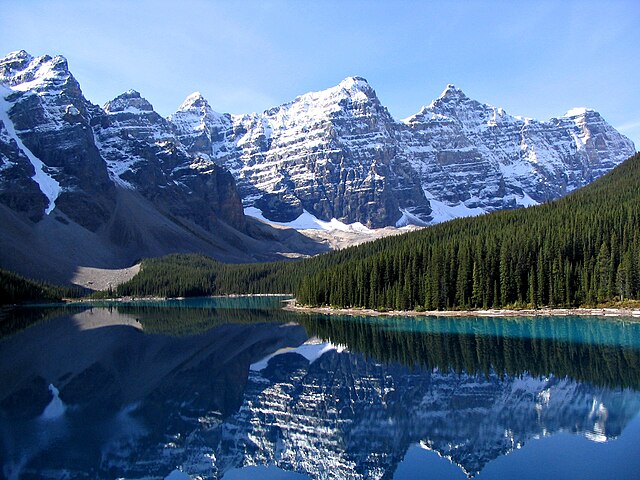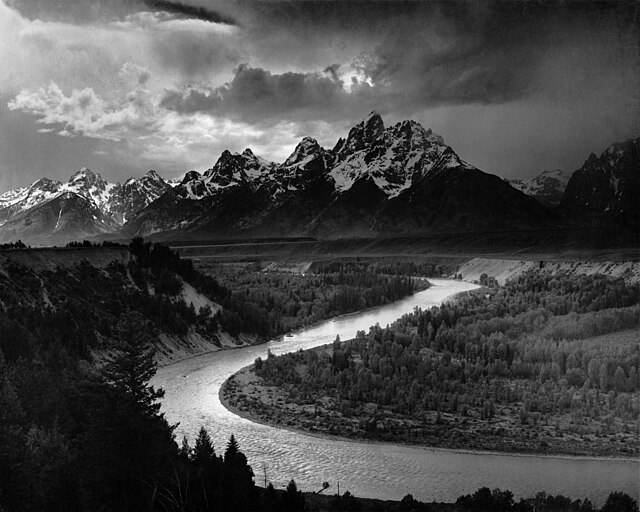The Teton Range is a mountain range of the Rocky Mountains in North America. It extends for approximately 40 miles (64 km) in a north–south direction through the U.S. state of Wyoming, east of the Idaho state line. It is south of Yellowstone National Park, and most of the east side of the range is within Grand Teton National Park.
Teton Range, from the Snake River overlook, by Ansel Adams
Aerial view of the Cathedral Group of the Teton Range from the southeast with South Teton, Nez Perce Peak, Middle Teton, Grand Teton, Mount Owen, Teewinot Mountain (from left to right; see the image annotations), Taggart Lake (left), and Bradley Lake (right)
The Teton Range rises dramatically above Mormon Row.
The Rocky Mountains, also known as the Rockies, are a major mountain range and the largest mountain system in North America. The Rocky Mountains stretch 3,000 miles in straight-line distance from the northernmost part of western Canada, to New Mexico in the southwestern United States. Depending on differing definitions between Canada and the U.S., its northern terminus is located either in northern British Columbia's Terminal Range south of the Liard River and east of the Trench, or in the northeastern foothills of the Brooks Range/British Mountains that face the Beaufort Sea coasts between the Canning River and the Firth River across the Alaska-Yukon border. Its southernmost point is near the Albuquerque area adjacent to the Rio Grande rift and north of the Sandia–Manzano Mountain Range. Being the easternmost portion of the North American Cordillera, the Rockies are distinct from the tectonically younger Cascade Range and Sierra Nevada, which both lie farther to its west.

Moraine Lake and the Valley of the Ten Peaks, Banff National Park, Alberta, Canada
The Santa Fe Mountains at the southern end of the Rockies as seen from the Sandia Crest in New Mexico
The summits of the Teton Range in Wyoming
Mount Robson in British Columbia







